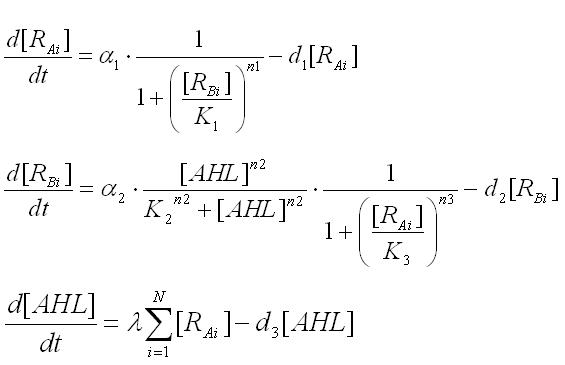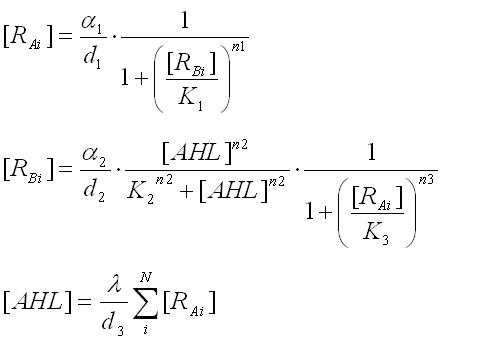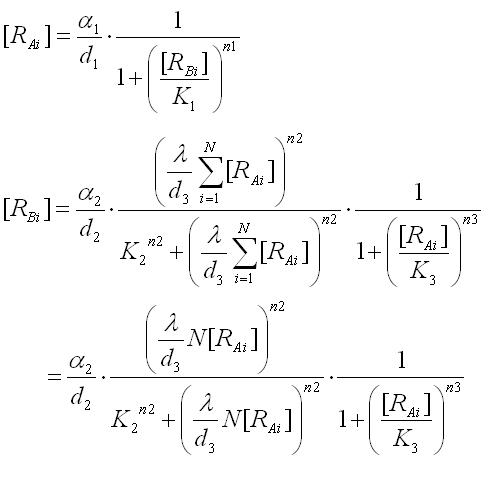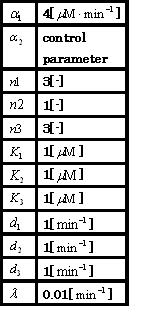Tokyo/Formulation/4.population model
From 2007.igem.org
(Difference between revisions)
| Line 1: | Line 1: | ||
__NOTOC__ | __NOTOC__ | ||
| - | <br>[[Tokyo/Works|Works top]] 0.[[Tokyo/Works/Hybrid promoter|Hybrid promoter]] 1.[[Tokyo/Works/Formulation |Formulation]] 2.[[Tokyo/Works/Assay |Assay1]] | + | <br>[[Tokyo/Works|Works top]] 0.[[Tokyo/Works/Hybrid promoter|Hybrid promoter]] 1.[[Tokyo/Works/Formulation |Formulation]] 2.[[Tokyo/Works/Assay |Assay1]] '''3.[[Tokyo/Works/Simulation |Simulation]]''' 4.[[Tokyo/Works/Assay2 |Assay2]] 5.[[Tokyo/Works/Future works |Future works]] |
| - | <br><br> | + | <br><br>[[Tokyo/Formulation/1.toggle model |Step1]] [[Tokyo/Formulation/2.toggle model with hybrid promoter |Step2]] [[Tokyo/Formulation/3.AHL-experssing model|Step3]] [[Tokyo/Formulation/4.population model|Step4]] [[Tokyo/Formulation/5.stochastic differential equation model with poisson random variables|Step5]] |
<br> | <br> | ||
Revision as of 06:55, 25 October 2007
Works top 0.Hybrid promoter 1.Formulation 2.Assay1 3.Simulation 4.Assay2 5.Future works
Step1 Step2 Step3 Step4 Step5
Next, to consider the number of cells, the differential equations for multiple cells were given as
where N indicates the number of the cells.
In the steady state,time derivatives are zero.As a result,the nullclines of this system were derived as
and then substitute the third equation into the second
To analyze the equations, the values of parameters in the right table were used.The phase plane are shown in Fig●
Step.4 >> Step.5



